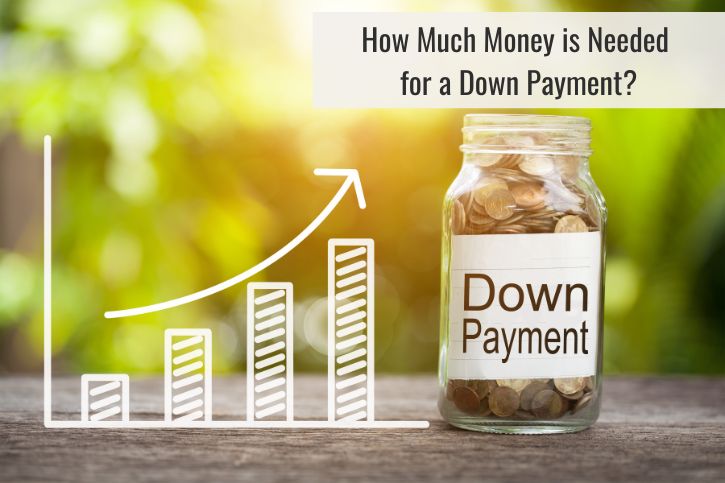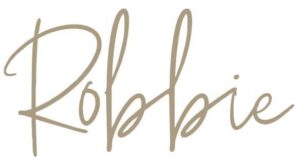Buying a home is one of the most exciting and financially significant milestones you can pursue. But before the keys are in your hand, one essential question comes first: how much money is needed for a down payment?
Whether you’re just starting to consider homeownership or you’re already in the early stages of the process, understanding your down payment obligation is critical. And if you’re looking for a real estate professional to help guide you through the maze of options, I’d argue there’s no one more equipped to serve you than me, Robbie English, Broker and REALTOR at Uncommon Realty. Let’s get into the details.

TL;DR: How Much Money is Needed for a Down Payment?
- Most buyers need between 3% and 20% of the home price for a down payment.
- Government-backed loans may require less or even zero down.
- Your down payment influences your mortgage rate, monthly payment, and loan approval.
- Saving consistently and exploring assistance programs can help meet your goal.
- Robbie English, Broker and REALTOR at Uncommon Realty, offers expert, personalized guidance to help you succeed.
What Is a Down Payment, and Why Does It Matter?
A down payment is the upfront amount of money you pay when purchasing a home. It’s usually a percentage of the purchase price. The remainder is financed through a mortgage. Pretty straightforward—but the amount you put down influences almost every aspect of the transaction.
A larger down payment generally means better loan terms, smaller monthly payments, and potentially fewer costs down the road. That said, there’s no one-size-fits-all amount. It depends on the home, the loan type, and your overall financial strategy.
Let’s say you want to buy a $500,000 home. A 20% down payment? That’s $100,000. But if you’re eligible for a loan requiring only 3%, you’re looking at $15,000. The difference is significant, and that’s why planning matters.
Conventional Loans and Down Payment Expectations
With traditional mortgages, lenders often recommend a 20% down payment. It’s not mandatory, but it does come with perks. At 20%, you’ll usually avoid the added cost of private mortgage insurance (PMI), and you may be rewarded with better interest rates and terms.
But here’s the thing—many buyers don’t start with 20%. And you don’t have to. You could qualify for conventional loans with just 5% or even 3% down, depending on the lender and your financial profile.
When you work with me, I’ll help you determine whether it makes sense to put more down now or leverage a lower entry point and keep cash available for other goals.
Government-Backed Loans: FHA, VA, and USDA
Now, let’s talk alternatives. Not every loan is conventional, and not every buyer fits that mold.
If your credit score isn’t perfect or your savings aren’t quite there, FHA loans are a popular route. These typically require a minimum down payment of 3.5%. They also tend to be more forgiving on credit history.
Then there’s the VA loan, available to eligible veterans and service members. With zero down and no PMI, this loan is one of the most generous available.
USDA loans, targeted toward rural and select suburban areas, also offer 0% down. Yes, zero.
These programs were designed with accessibility in mind. The down payment requirements for buying a house through these routes can significantly lower the upfront barrier to entry.
How Loan Type and Home Price Interact
Let’s not gloss over the reality that home price is a major factor. A 5% down payment on a $350,000 house is $17,500. On a $750,000 home, that same 5% equals $37,500. The percentages may look small, but the actual numbers quickly add up.
It’s not just about the percentage. It’s about what makes sense for your long-term strategy. When my clients ask, “how much money is needed for a down payment?”—we look at more than just what you can put down. We focus on what you should put down to protect your financial future.
Don’t Overlook Closing Costs and Other Upfront Expenses
While the down payment often takes center stage, don’t forget about closing costs. These can include loan origination fees, title insurance, inspections, and more. Typically, closing costs range from 2% to 5% of the home’s purchase price. I’ll walk you through every line item so you’re not caught off guard.
There’s also the matter of having funds left for moving, furniture, initial maintenance, or simply building an emergency reserve. Emptying your accounts for a down payment may not be the wisest path.
Smart Saving: Building Your Down Payment Fund
If you’re not quite ready, that’s okay. The goal is to start. And once you start, stay consistent.
Open a separate savings account specifically for your down payment. Set up automatic transfers so it builds every month without you having to think about it. Adjust your budget. Track your expenses. Eliminate things that no longer serve your financial priorities. Every dollar saved now brings you closer to the front door of your new home.
Many of my clients find it helpful to create a down payment timeline. We map out how much to save monthly and pair that with a purchase goal. Some timelines are six months. Others are two years. What matters is that it’s realistic—and aligned with your financial goals.
What About Down Payment Assistance?
Depending on where you’re buying and your personal circumstances, you might qualify for down payment assistance programs. These vary by state, county, and even city.
These programs can come in the form of grants (which don’t need to be repaid) or deferred loans (which do, but usually under generous terms).
If you’re searching in Austin or elsewhere in Texas, I can help identify available programs and walk you through the fine print. Many homebuyers overlook this opportunity because they don’t know it exists. I won’t let you miss it.
How Your Down Payment Affects the Mortgage
Let’s talk long-term effects. A larger down payment doesn’t just change your monthly bill—it can significantly lower the total interest paid over the life of your loan.
It also improves your debt-to-income ratio, which lenders love to see. That can result in stronger loan offers and higher chances of approval. For buyers with credit challenges, this might be the edge that makes or breaks the deal.
But a bigger down payment isn’t always the best path. If it stretches your finances too thin or depletes savings you might need later, the long-term benefits can be offset by short-term strain. That’s where personalized strategy matters. And that’s what I deliver.
A Word on Strategy—Why It’s About More Than Money
Real estate success isn’t just about numbers. It’s about knowing how to interpret those numbers and make strategic decisions.
That’s where I come in.
I’m Robbie English, Broker and REALTOR at Uncommon Realty. I’ve spent decades mastering this business—not just for myself, but to improve the outcomes for every client I serve. I teach real estate agents nationwide how to do this job well because I believe our industry needs more transparency, strategy, and insight.
When you work with me, you’re not just getting an agent. You’re getting a highly skilled strategist who’s on your side from day one. I don’t do boilerplate advice. I take time to understand you, your goals, your timeline, and your financial picture.
Want to know exactly how much money is needed for a down payment in your unique situation? I’ll show you, step by step.
Why Work With Me Over Someone Else?
Because most agents know how to open a door and write an offer. But few understand how to guide you through the full financial and emotional landscape of homeownership.
I do. I’ve built my career on it.
While other agents stop at surface-level service, I go further. I map out a purchase plan tailored to your real-world goals. I dig into the loan options, the offer strategy, and the long-term outcomes. I’ve worked hard to become the expert clients turn to when they want results—not guesswork.
Final Thoughts
So, how much money is needed for a down payment? That depends—on your goals, your loan type, your market, and your timeline.
But one thing’s for sure: you don’t have to figure it out alone.
Whether you’re ready to buy now or just starting to prepare, let’s talk. You deserve expert guidance, strategic advice, and a real estate professional at Uncommon Realty who’s committed to your long-term success.
Let’s get you one step closer to that new front door—on your terms, with your future in mind.





 Just checking. Are you sure there are not any questions or if there’s anything more my team or I can help with, we’re here for you.
Just checking. Are you sure there are not any questions or if there’s anything more my team or I can help with, we’re here for you.
